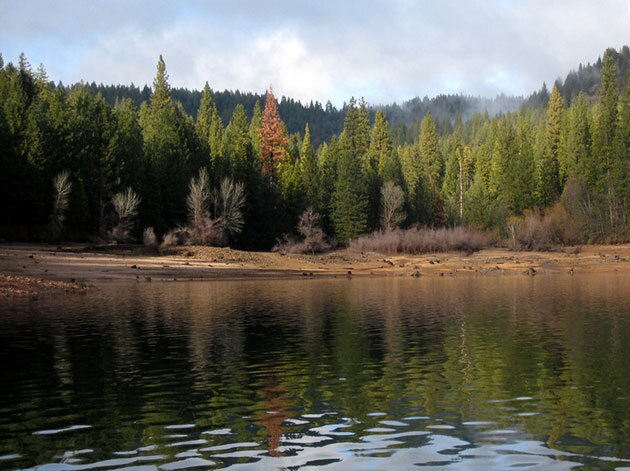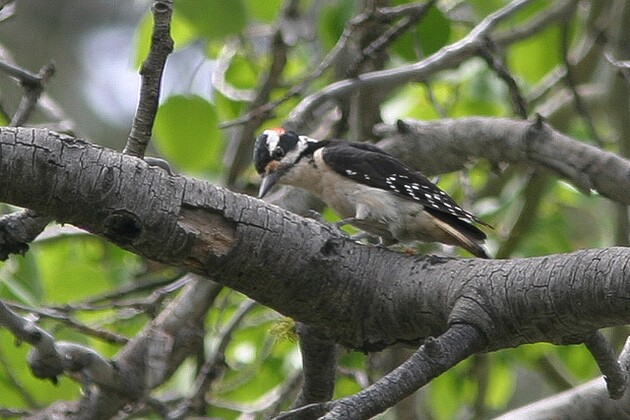In Defense of The Bark Beetle

We've all seen the sensational headlines: according to the U.S. Forest Service, bark beetles, spurred on by the drought, have killed 25 million trees in California's forests this year, greatly increasing the spread and intensity of recent fires.
What we haven't seen is a critical assessment of these claims. Are bark beetles really increasing fire intensity? Are they really threatening the ecological health of our forests?
Many Californians, unfortunately, are content to avoid these questions. That number includes some state and federal legislators and their timber industry campaign contributors, who are taking advantage of public fear and misunderstanding of the ecological role of beetles to push for a huge increase in logging and clearcutting in California's forests.
Republican state legislators are urging Governor Jerry Brown to declare a state of emergency, freeing up millions of dollars from the state treasury to subsidize a massive commercial logging program that would cut down and remove dead trees statewide. In Washington D.C., House Republicans passed a bill, H.R. 2647, that would suspend most federal environmental laws to facilitate a huge increase in commercial logging of live and dead trees on our National Forest lands, ostensibly to save our forests from bark beetles and fire. The bill is now pending in the U.S. Senate, and Republicans and the logging industry are now attempting to persuade some Democrats, like Senator Dianne Feinstein, to support some version of the logging bill.
But the public is being profoundly misled on these issues. First, trees killed by bark beetles do not increase fire intensity and spread. Numerous scientific studies have been published on this issue, and they consistently reach this conclusion. The most recent and most comprehensive of these, published this year in the Proceedings of the National Academy of Sciences, investigated whether recent tree mortality from bark beetles increased fire spread, studying forests across the western U.S., including forests throughout California. Lead author Sarah Hart and her co-authors concluded that "the annual area burned in the western United States has not increased in direct response to bark beetle activity."
Other studies have investigated whether forests with higher numbers of dead trees from bark beetles burn more intensely, and over and over again they have found no such increase in fire activity. A 2009 paper by Monica Bond et al, which I co-authored, looked at the same question in mixed-conifer forests in the San Bernardino National Forest in southern California. Again, the forests with the highest levels of snags from bark beetles did not burn more intensely.
In still another paper published in 2011, Martin Simard and his colleagues studied both recent and older tree mortality from bark beetles, and found that neither increased the probability of crown fire (high-intensity fire), and in fact forests with higher levels of dead trees, known as "snags", often burned at lower intensities. Research by NASA, using satellite imagery, also suggests that forests with higher levels of snags from beetles tend to burn at lower intensities. Numerous other similar studies are summarized in a recent book I co-edited with Dominick DellaSala, "The Ecological Importance of Mixed-Severity Fires: Nature's Phoenix."
In short, this issue has been studied very extensively, and the overwhelming weight of scientific evidence from actual field research concludes that bark beetles do not seem to increase fire spread and intensity. Like many things in the field of forest and fire ecology, this may seem counterintuitive at first. But it makes sense upon deeper examination, and a number of explanations have been offered, such as the tendency of volatile oils to dissipate in the needles of conifers after trees die, and the fact that flames don't move as easily through the forest canopy once needles on dead trees begin to fall to the ground.
Rather than pests, both the bark beetle and wood-boring beetle species at issue are native species that fill essential roles in native forests. They evolved in these forests over many millennia; in many ways, they're a cornerstone of the biodiversity in forest ecosystems in California and the western U.S.
Periods of drought are natural in the western U.S., and most dead trees result from occasional pulses of drought and fire. These native beetle species require recently dead trees to survive, since their larvae depend upon the unique microhabitat and food conditions found under the bark of recent snags. Woodpeckers depend upon these beetle larvae for their food, and the woodpeckers need snags, which are softer than live trees, so they can excavate nest cavities to raise their chicks.

Every year these native woodpecker species, like the black-backed woodpecker, hairy woodpecker, and white-headed woodpecker, create a new nest cavity, allowing the previous cavities to be used by dozens of species that also require nest cavities but cannot create their own, such as bluebirds, nuthatches, wrens, and even small mammals like flying squirrels and pine martens. Raptors such as the northern goshawk and Cooper's hawk depend upon such birds for their food.
Where pockets of dead trees occur, increased sunlight spurs the growth of native shrubs, which produce flowers and edible berries. These shrubs require high levels of sunlight, and cannot survive under the shade of a dense forest canopy. The flowers attract native flying insects -- bees, wasps, butterflies and moths -- which in turn provide food for flycatching birds and bats. The berries on these shrubs are essential food bears need to eat to fatten up before the long, cold winter, and the leaves on the shrubs provide forage for mule deer. The shrubs also create important nesting habitat for many shrub-nesting birds, many of which have become rare or are declining due to lack of habitat currently. Small mammals create dens in the shrubs and downed logs, providing a core food source for owls.
The entire ecosystem and many of its inhabitants depend upon these native beetle species and an abundance of snags. No snags, no beetles. No beetles, no woodpeckers. No woodpeckers, no bluebirds, nuthatches, or other secondary cavity-nesters. No woodpeckers, bluebirds, etc., no hawks. Without an ample supply of snags, and healthy beetle populations, bears and deer also suffer.
The fact is, an ecologically healthy forest has a lot of dead trees. Current science indicates that we have a deficit, not an overabundance, of dead trees in forests of California, relative to the needs of the dozens of cavity-nesting wildlife species that depend upon these snags for both food and homes. In most forests in California, there was an average of just one or two snags per acre, or less, prior to the recent pulse of tree mortality from bark beetles. The 25 million new snags in 2015 represent less than one additional snag per acre in the 33 million acres of forests in California. Studies show that cavity-nesting wildlife species generally need at least four to eight snags per acre to have sufficient food and nest-cavity abundance. The rarest and most imperiled cavity-nesting species often require much higher levels.
For example, the California spotted owl depends on dense, old forests with 8 to 12 snags per acre for nesting and roosting habitat, and generally even higher levels for foraging habitat, because snags and downed logs (after the snags fall to the ground) create excellent habitat for the owl's small mammal prey species. The rare black-backed woodpecker depends upon areas with at least several dozen snags per acre in order to have enough food to survive, since the birds feed on the larvae from native beetles found almost exclusively under the bark of dead trees.
So, when you see a forested slope with some pockets of dead trees, don't lament it; rather, celebrate the sight as a positive sign for wildlife populations and the ecological resilience of the forest.





